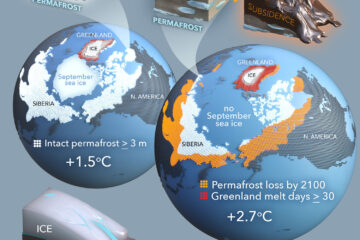Effects of climate on soil phosphorus cycle and availability in natural terrestrial ecosystems
Climate is predicted to change over the 21st century. However, little is known about how climate change can affect soil phosphorus (P) cycle and availability in global terrestrial ecosystems, where P is a key limiting nutrient. With a global database of Hedley P fractions and key‐associated physiochemical properties of 760 (seminatural) natural soils compiled from 96 published studies, this study evaluated how climate pattern affected soil P cycle and availability in global terrestrial ecosystems. Overall, soil available P, indexed by Hedley labile inorganic P fraction, significantly decreased with increasing mean annual temperature (MAT) and precipitation (MAP). Hypothesis‐oriented path model analysis suggests that MAT negatively affected soil available P mainly by decreasing soil organic P and primary mineral P and increasing soil sand content. MAP negatively affected soil available P both directly and indirectly through decreasing soil primary mineral P; however, these negative effects were offset by the positive effects of MAP on soil organic P and fine soil particles, resulting in a relatively minor total MAP effect on soil available P. As aridity degree was mainly determined by MAP, aridity also had a relatively minor total effect on soil available P. These global patterns generally hold true irrespective of soil depth (less than or equal to 10 cm or greater than 10 cm) or site aridity index (less than or equal to 1.0 or greater than 1.0), and were also true for the low‐sand (less than or equal to 50%) soils. In contrast, available P of the high‐sand (greater than 50%) soils was positively affected by MAT and aridity and negatively affected by MAP. Our results suggest that temperature and precipitation have contrasting effects on soil P availability and can interact with soil particle size to control soil P availability.


